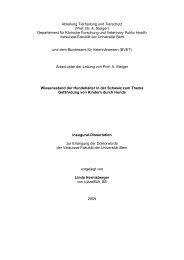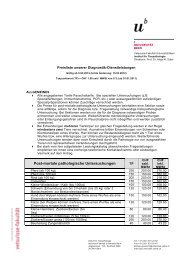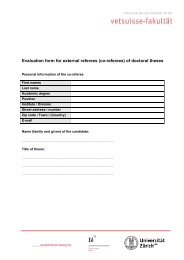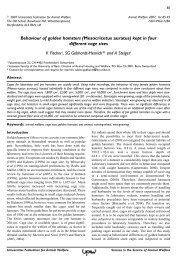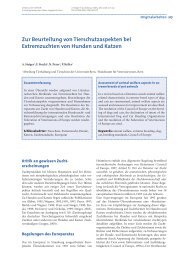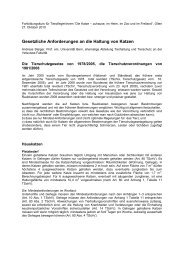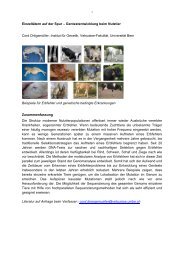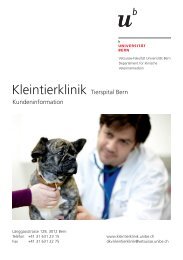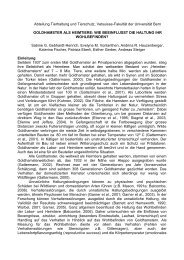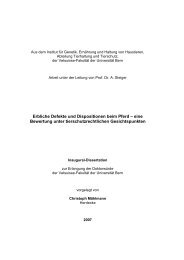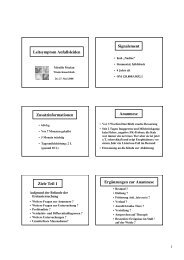Behaviour of golden hamsters (Mesocricetus auratus) - Vetsuisse ...
Behaviour of golden hamsters (Mesocricetus auratus) - Vetsuisse ...
Behaviour of golden hamsters (Mesocricetus auratus) - Vetsuisse ...
You also want an ePaper? Increase the reach of your titles
YUMPU automatically turns print PDFs into web optimized ePapers that Google loves.
DiscussionHamsters spent most <strong>of</strong> the observed time wheel running. The running wheel activitywas the same in all four cage sizes. This might indicate that running in the wheel isvery important to them. A bigger cage obviously has no attraction that competes withwheel running. Gebhardt-Henrich et al. (2005) showed that the degree <strong>of</strong> wheelrunning was adapted to individual circumstances, since <strong>hamsters</strong> reduced or evenstopped wheel running during breeding. Additionally, the running wheel had abeneficial effect on the well-being <strong>of</strong> the <strong>hamsters</strong>, since it significantly decreasedstereotypic wire gnawing. Our results confirm their findings. The longer wheel runningwas performed, the less stereotypic wire gnawing was observed. Furthermore,<strong>hamsters</strong> which showed less wheel running seemed to compensate the need formovement with climbing. Nevertheless some scientists describe wheel running as astereotypic behaviour (see review by Sherwin, 1998) and therefore it is not clearwhether the provision <strong>of</strong> a running wheel should be mandatory for <strong>golden</strong> <strong>hamsters</strong>.Stereotypies are common indicators for poor welfare (e.g. review by Mason1991, Würbel 2001). Stereotypic behaviour is commonly defined by repetitive,unvarying behavioural patterns without obvious goal or function (Ödberg, 1987),when kept under barren housing conditions (Mason, 1991). Stereotypic wire gnawingis <strong>of</strong>ten observed in captive rodents (Würbel and Stauffacher 1996, 1997, 1998,Wiedenmayer 1997, Waiblinger 1999).Wire gnawing <strong>of</strong> <strong>hamsters</strong> in the present study was considered to bestereotypic because it was repetitive, invariant and was performed at a particular spoton the wire top <strong>of</strong> the cage (similarly in mice, Würbel et. al. 1996). Additionally it waswithout function because wire gnawing was considered to develop from outside-21



